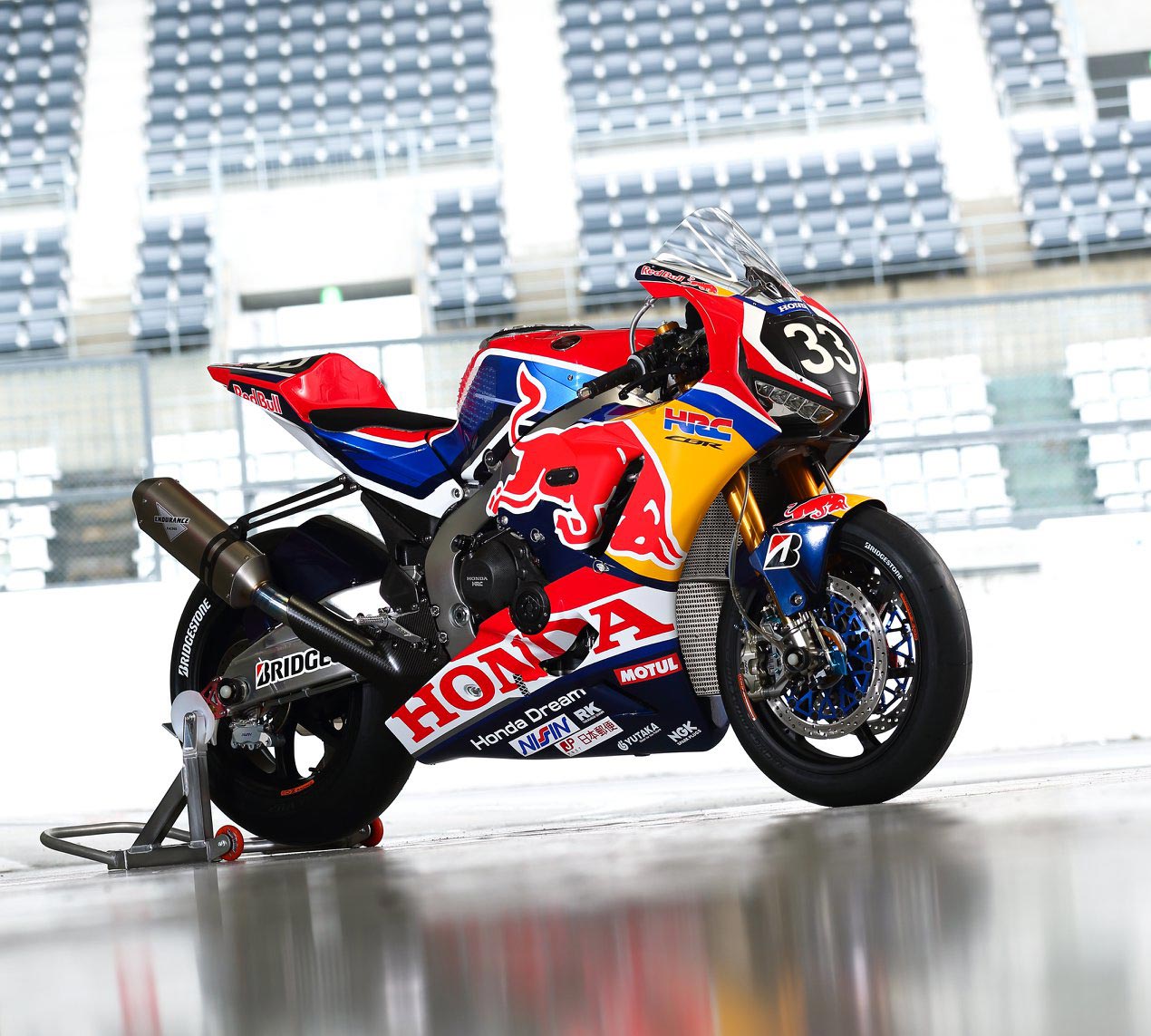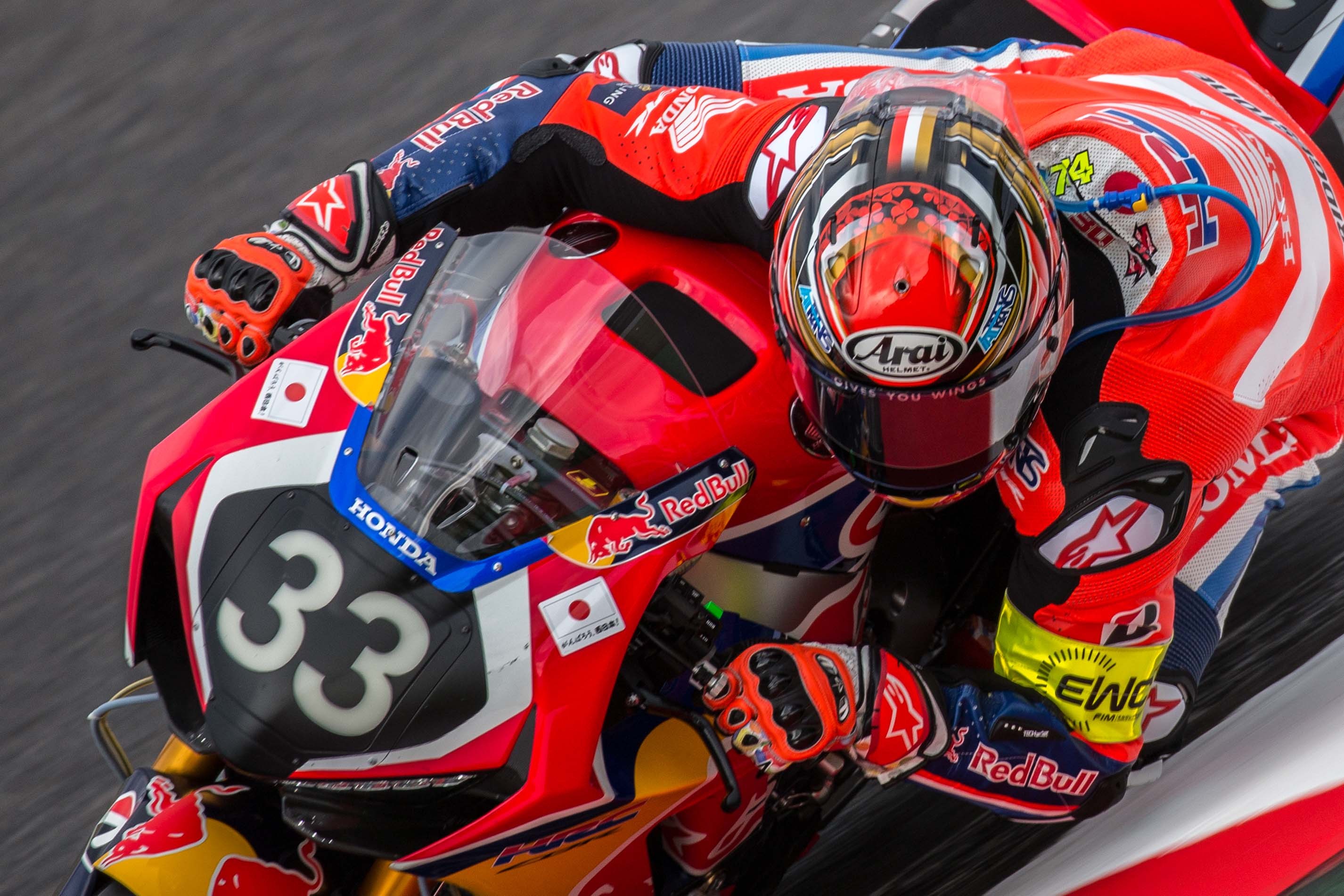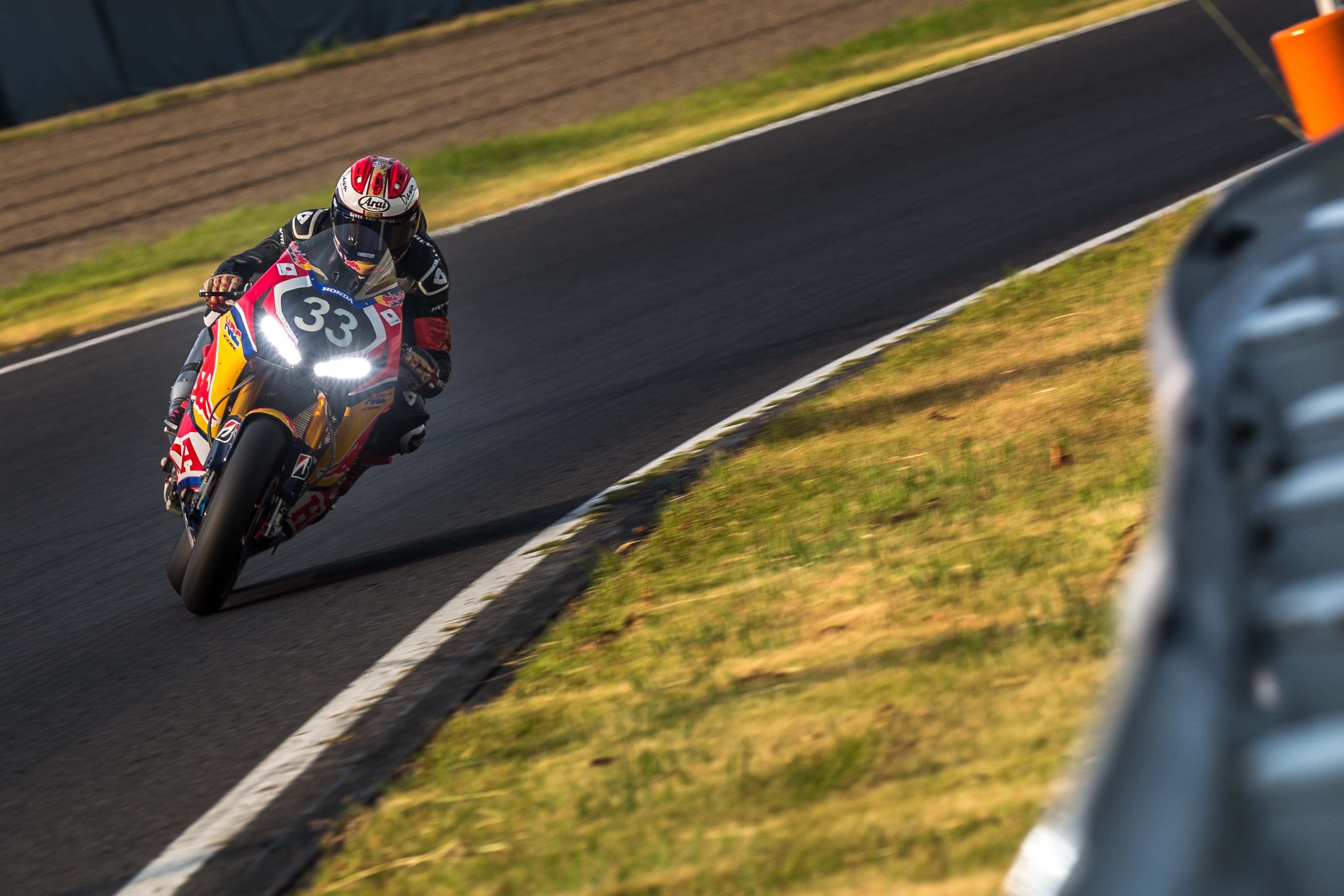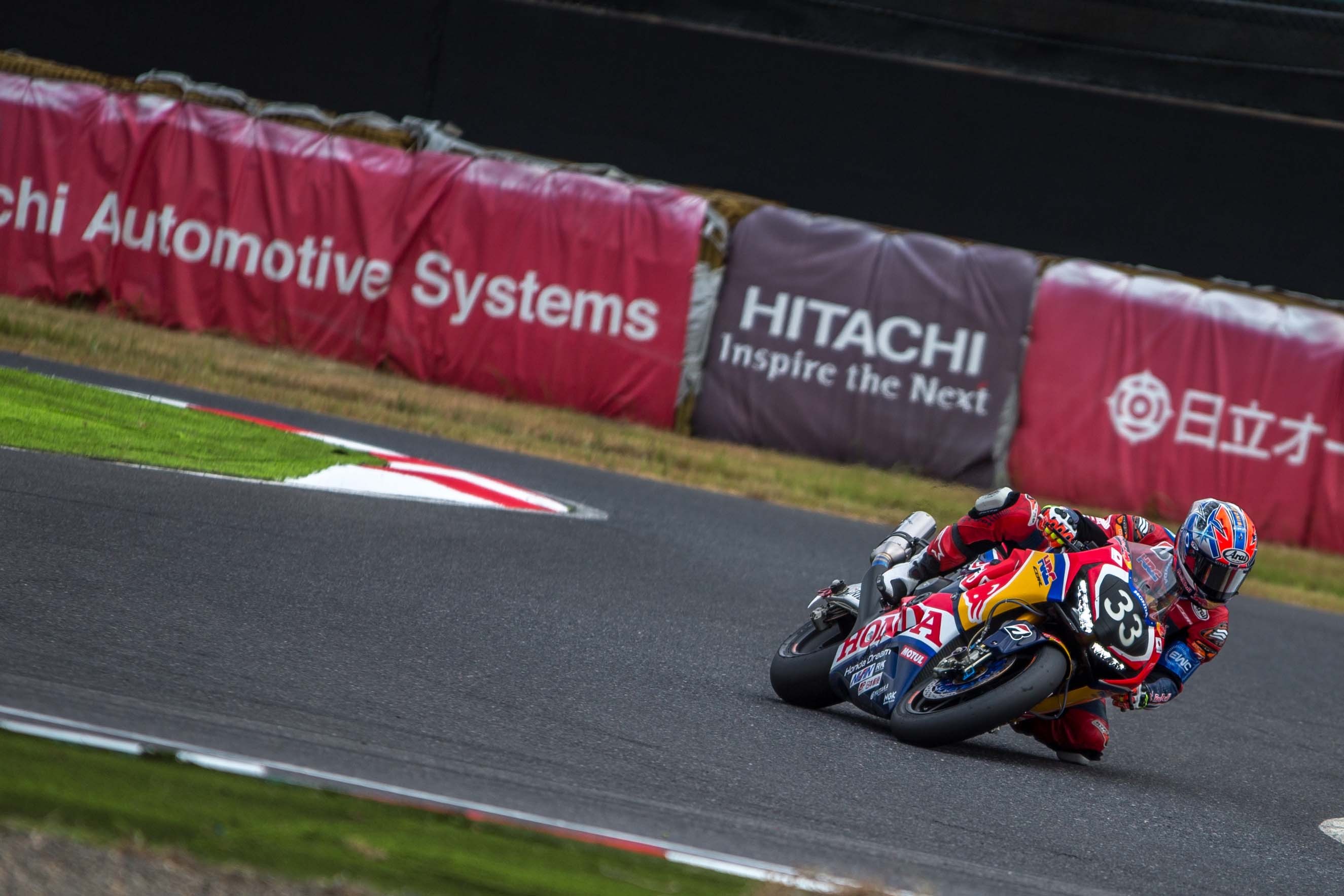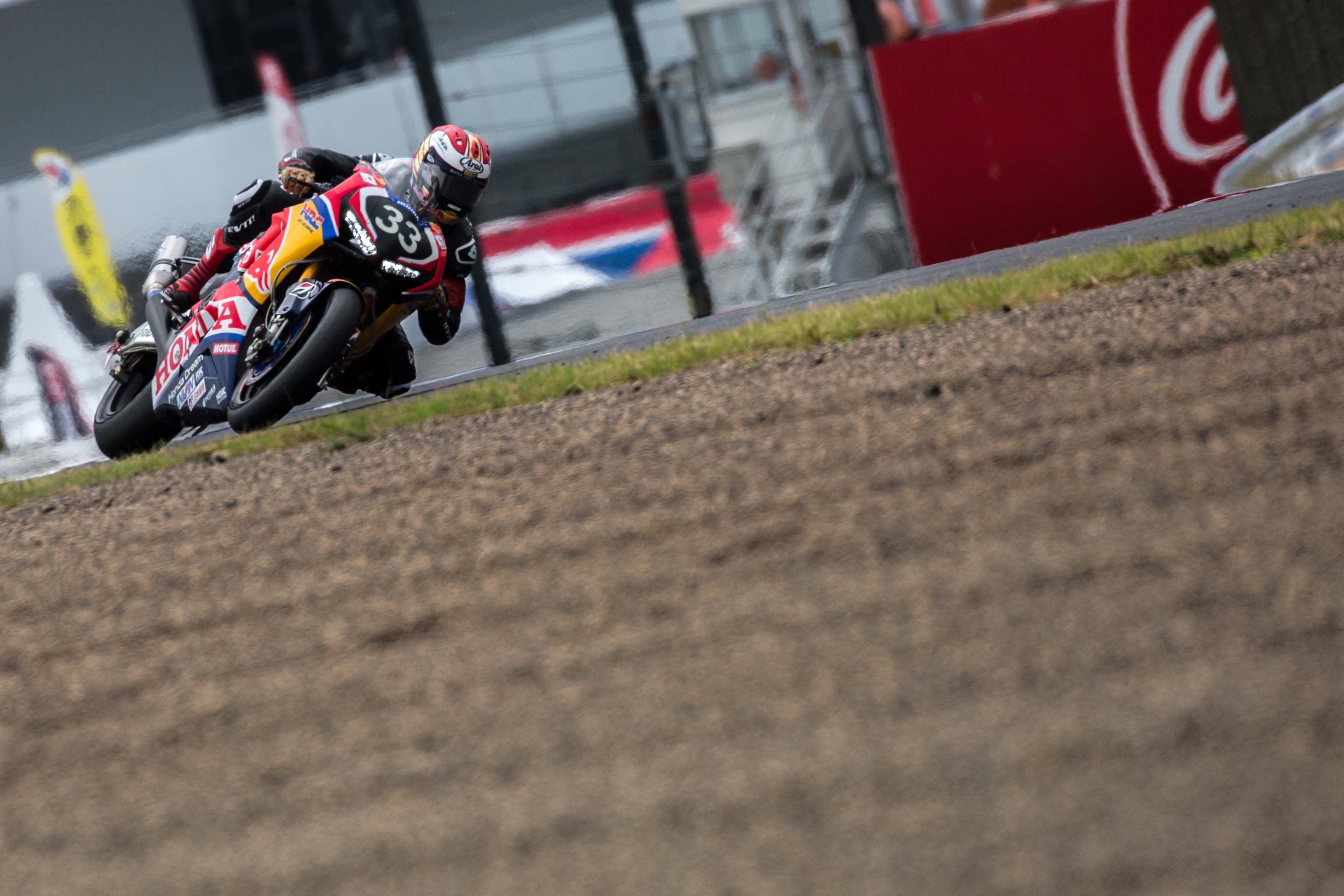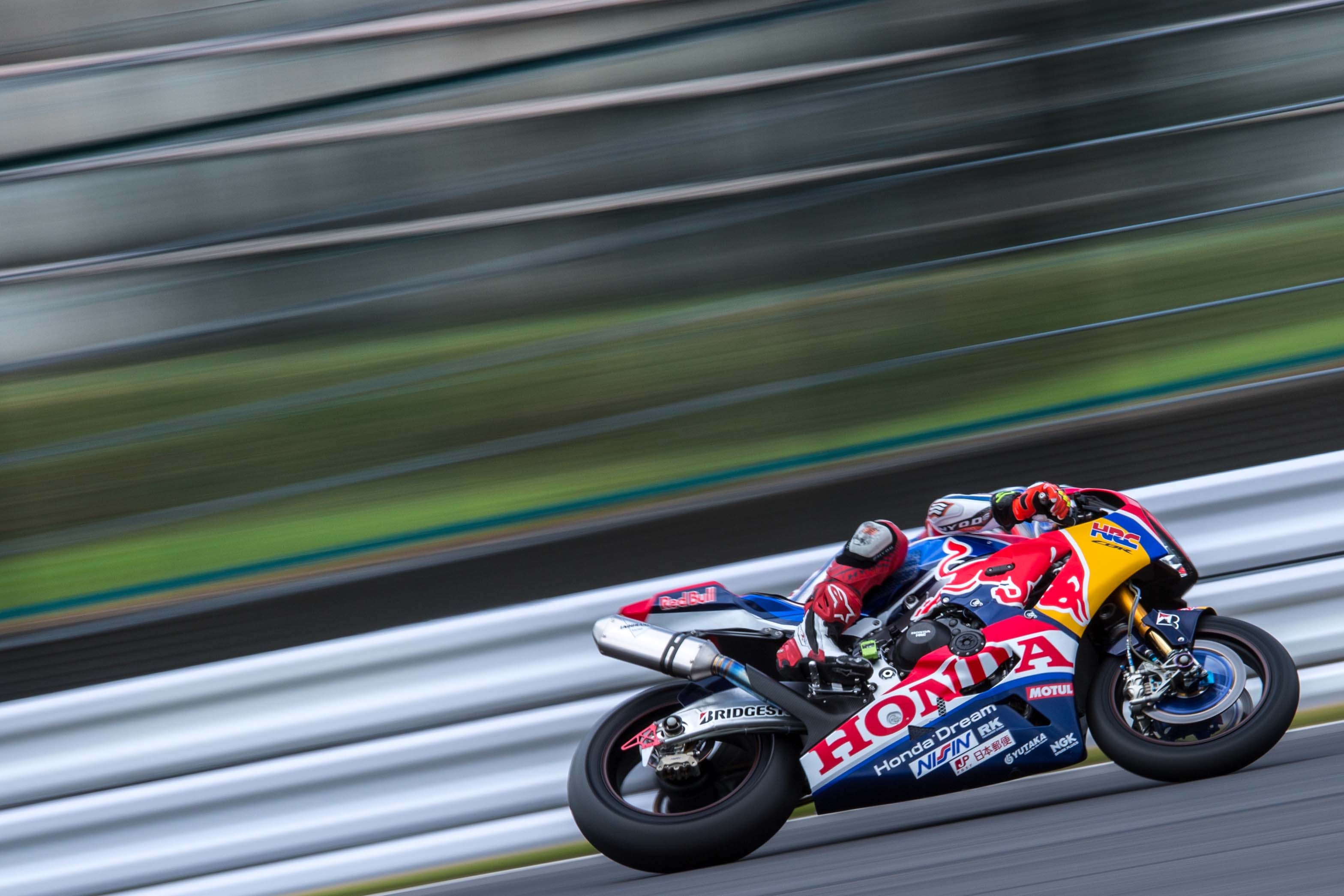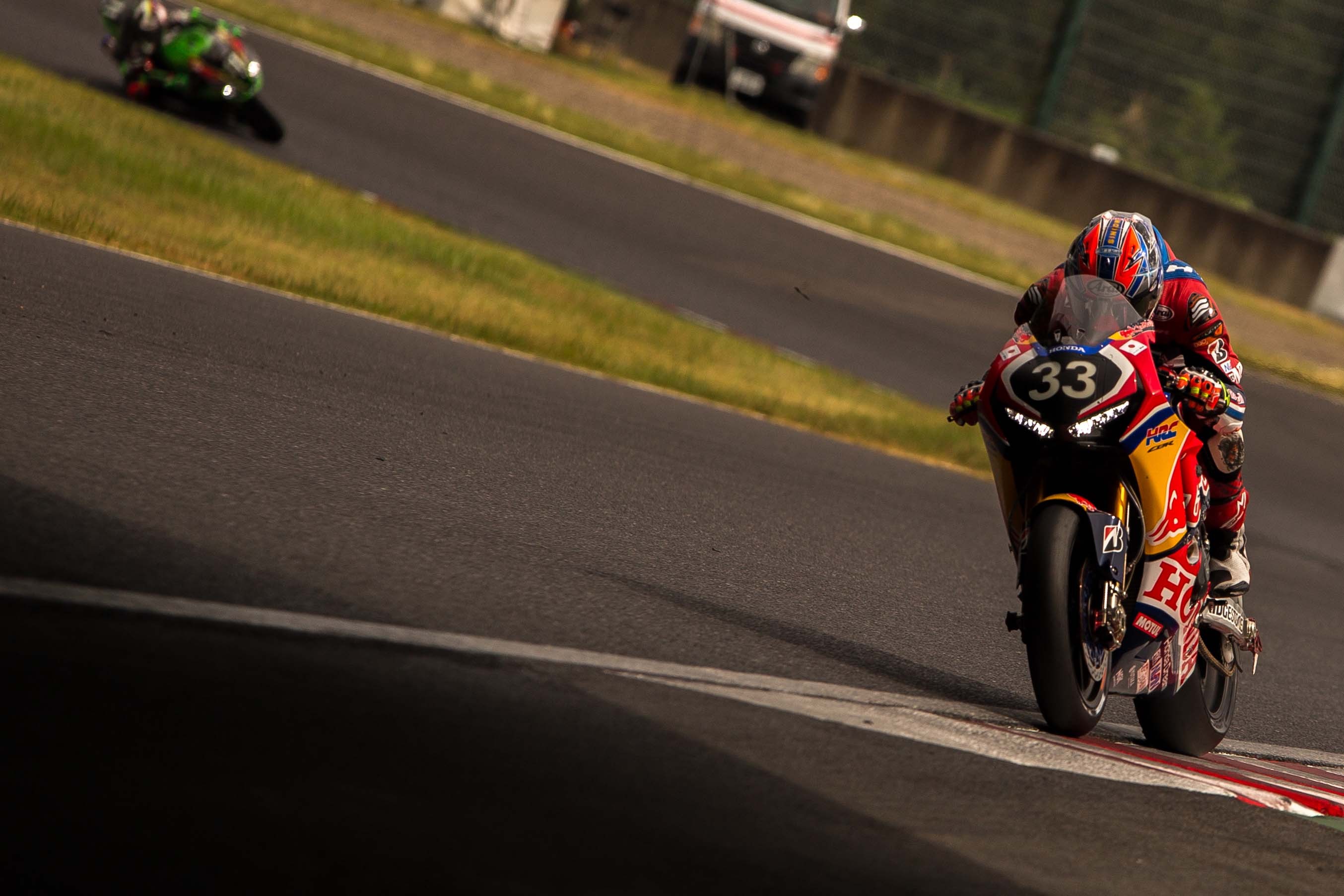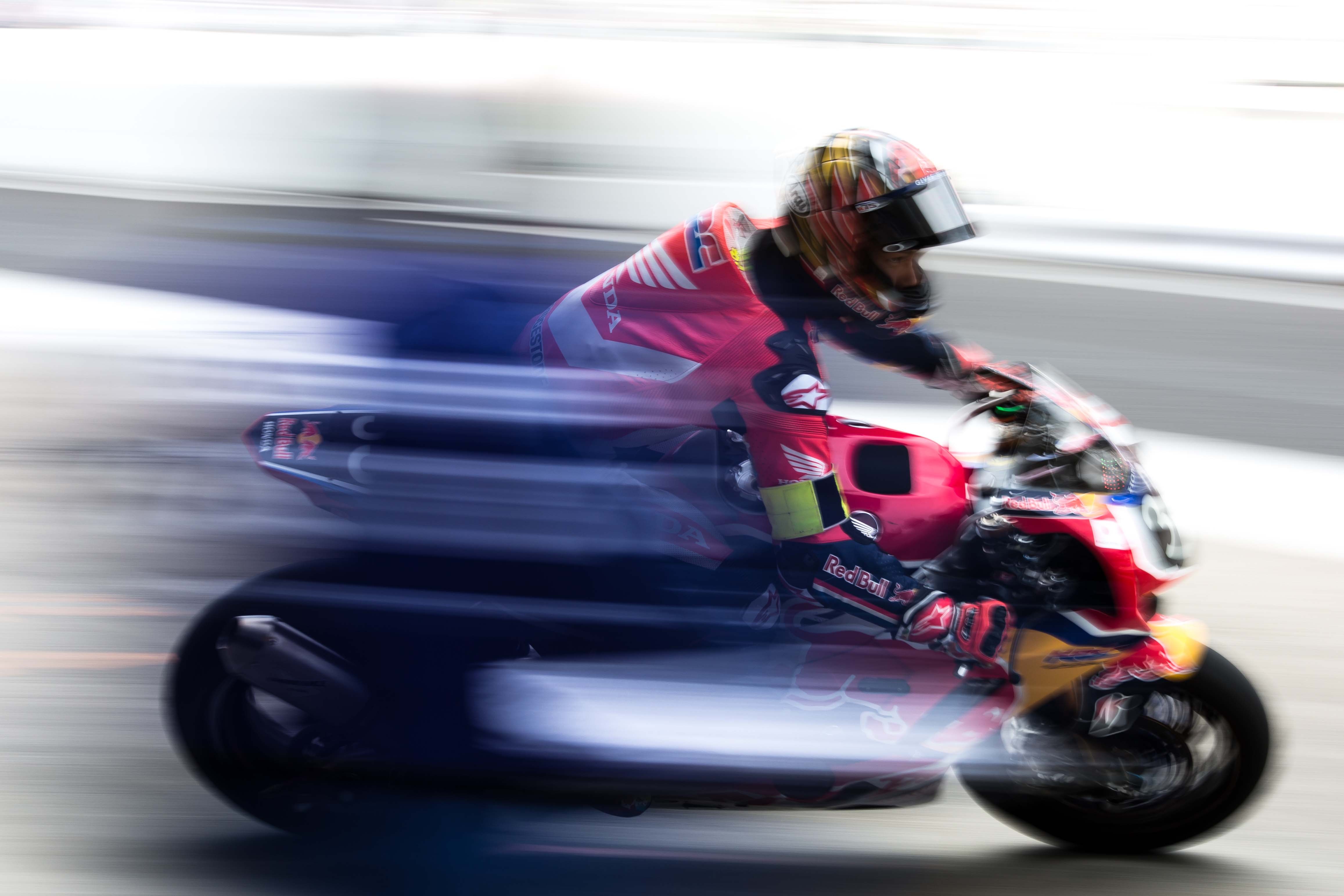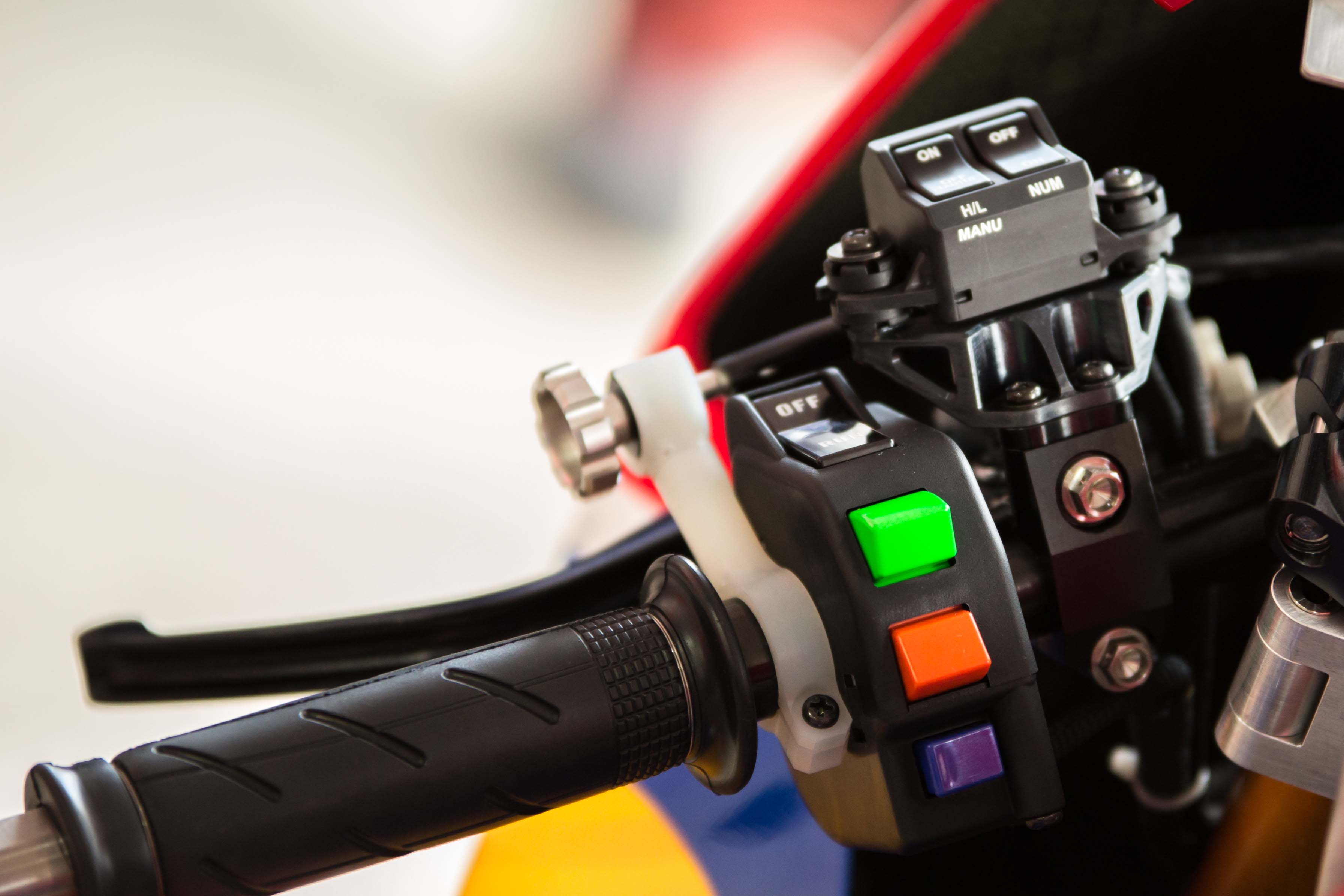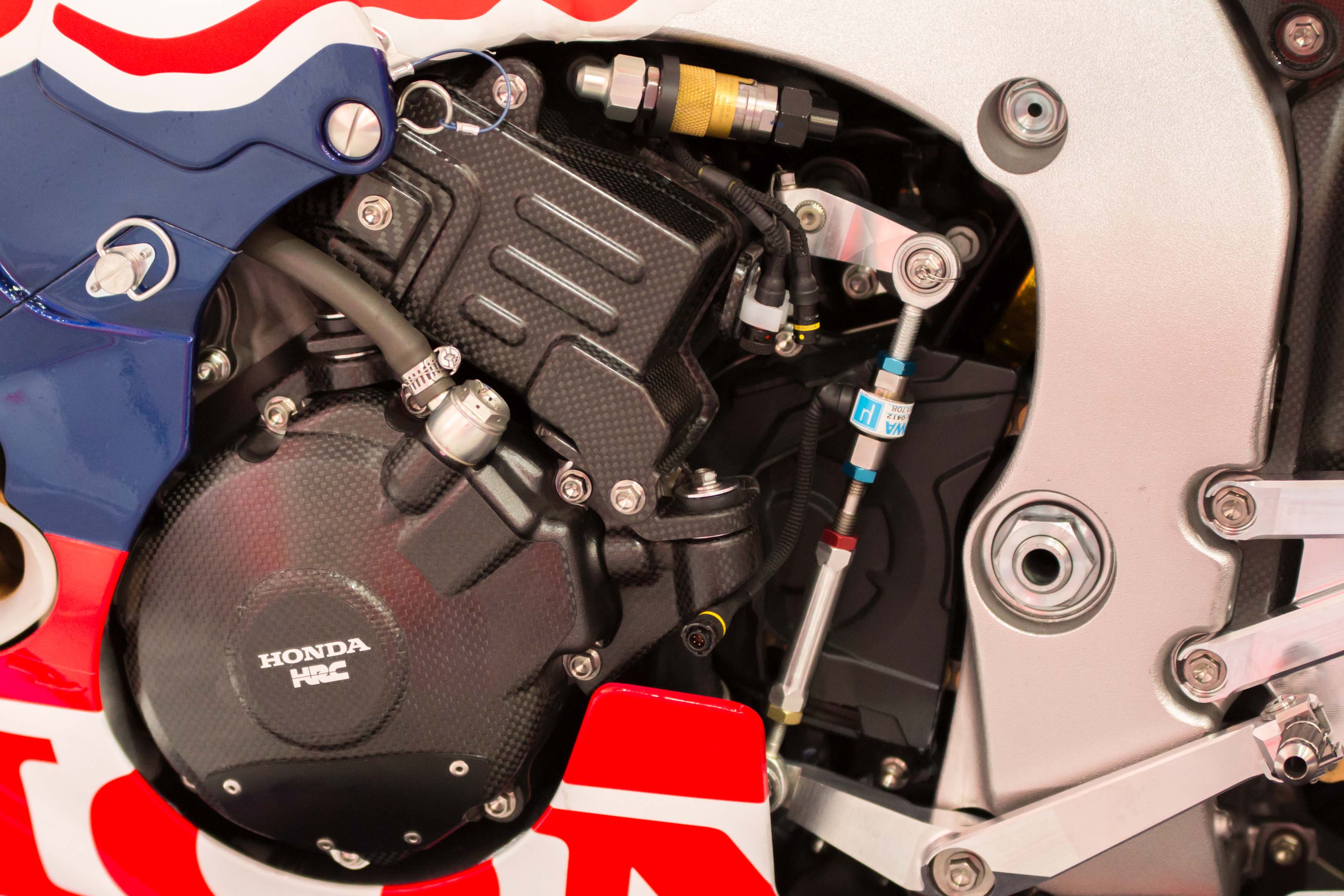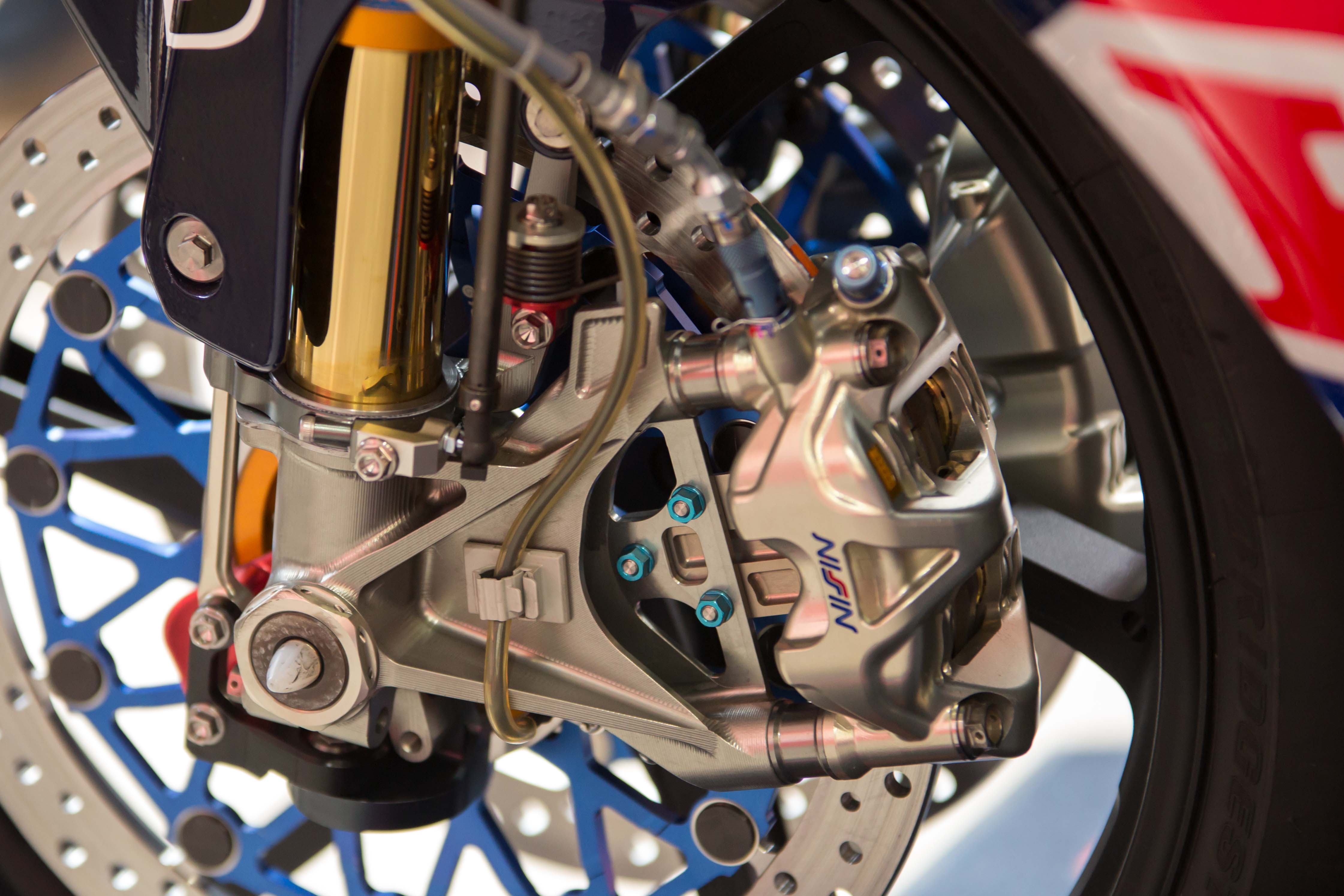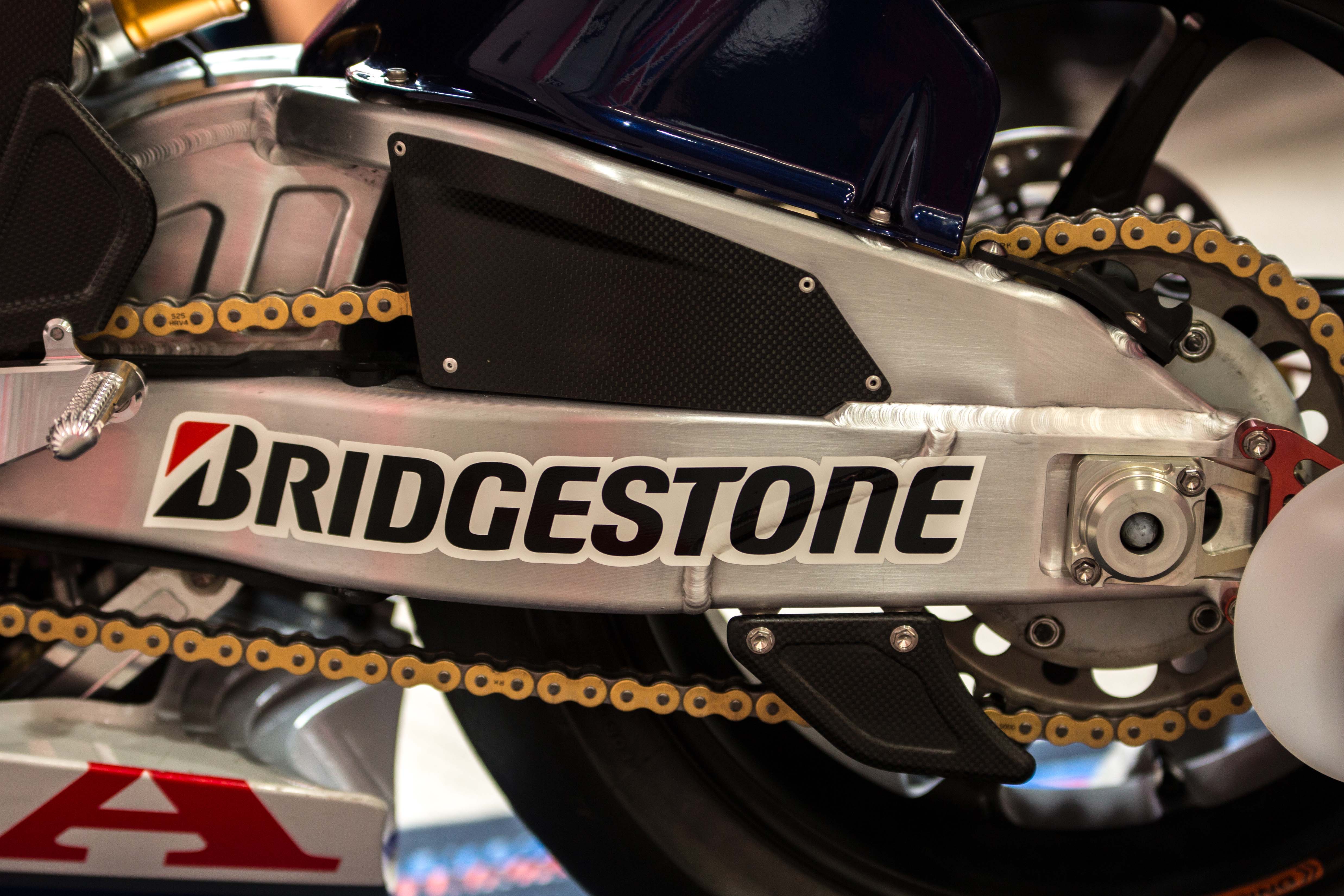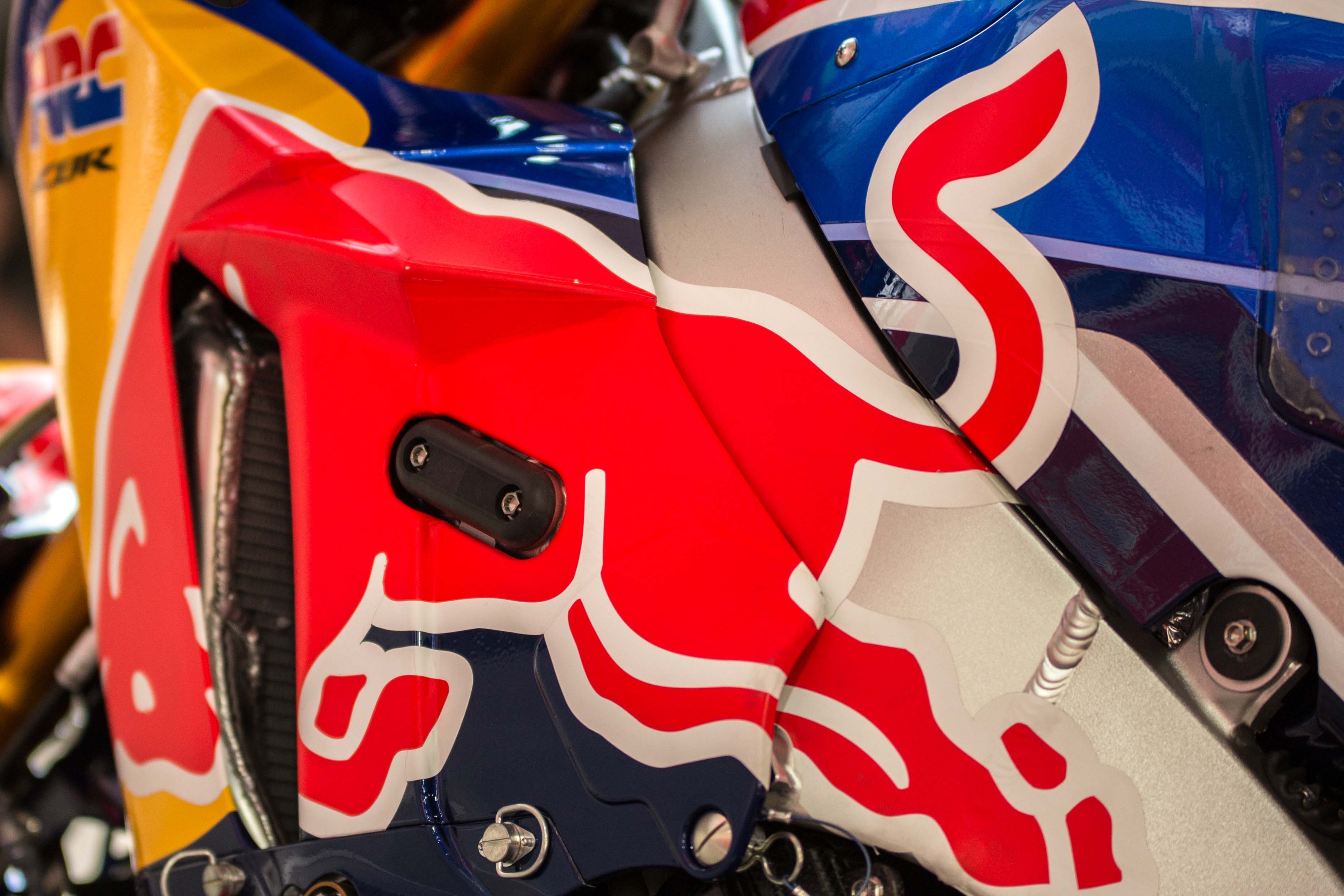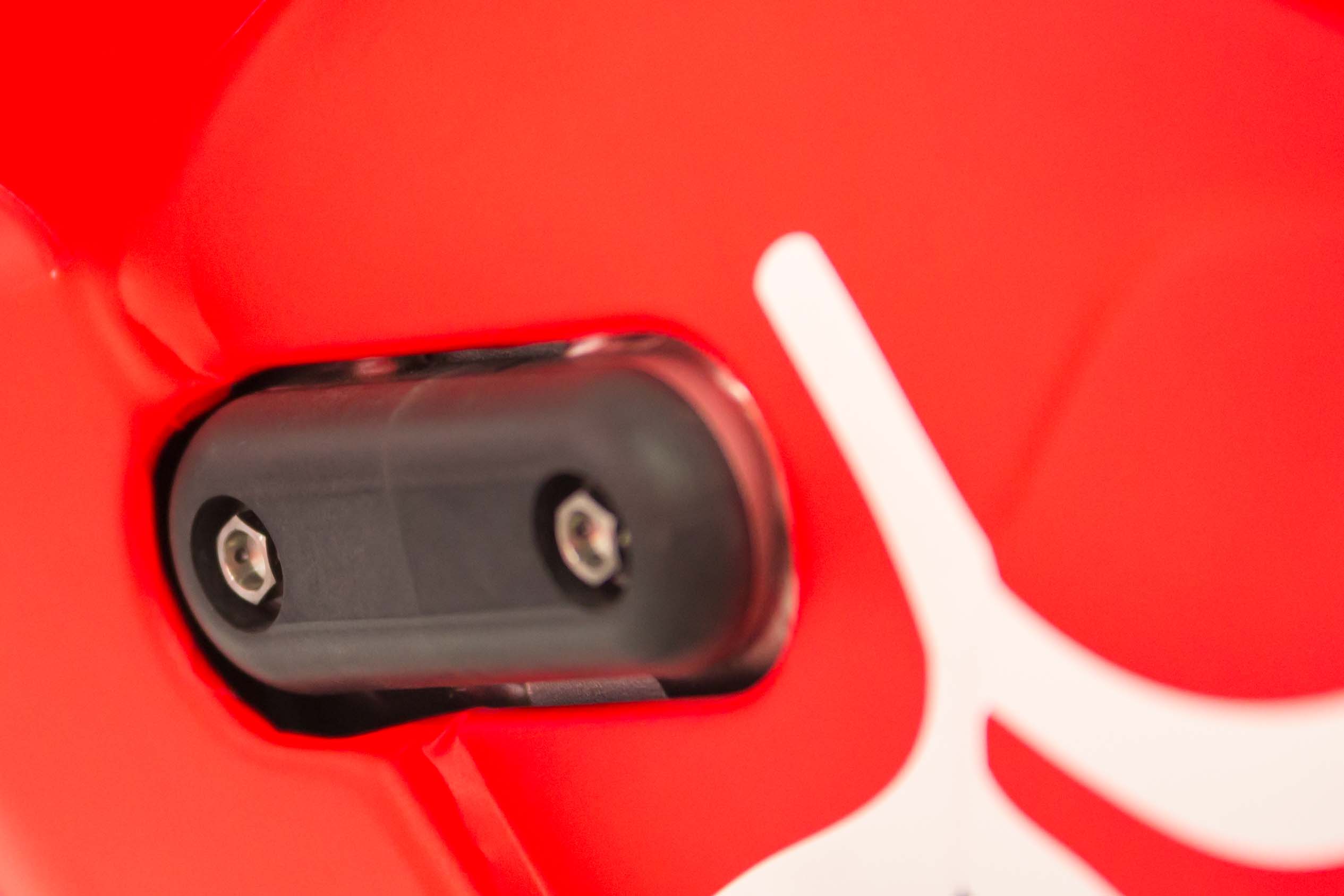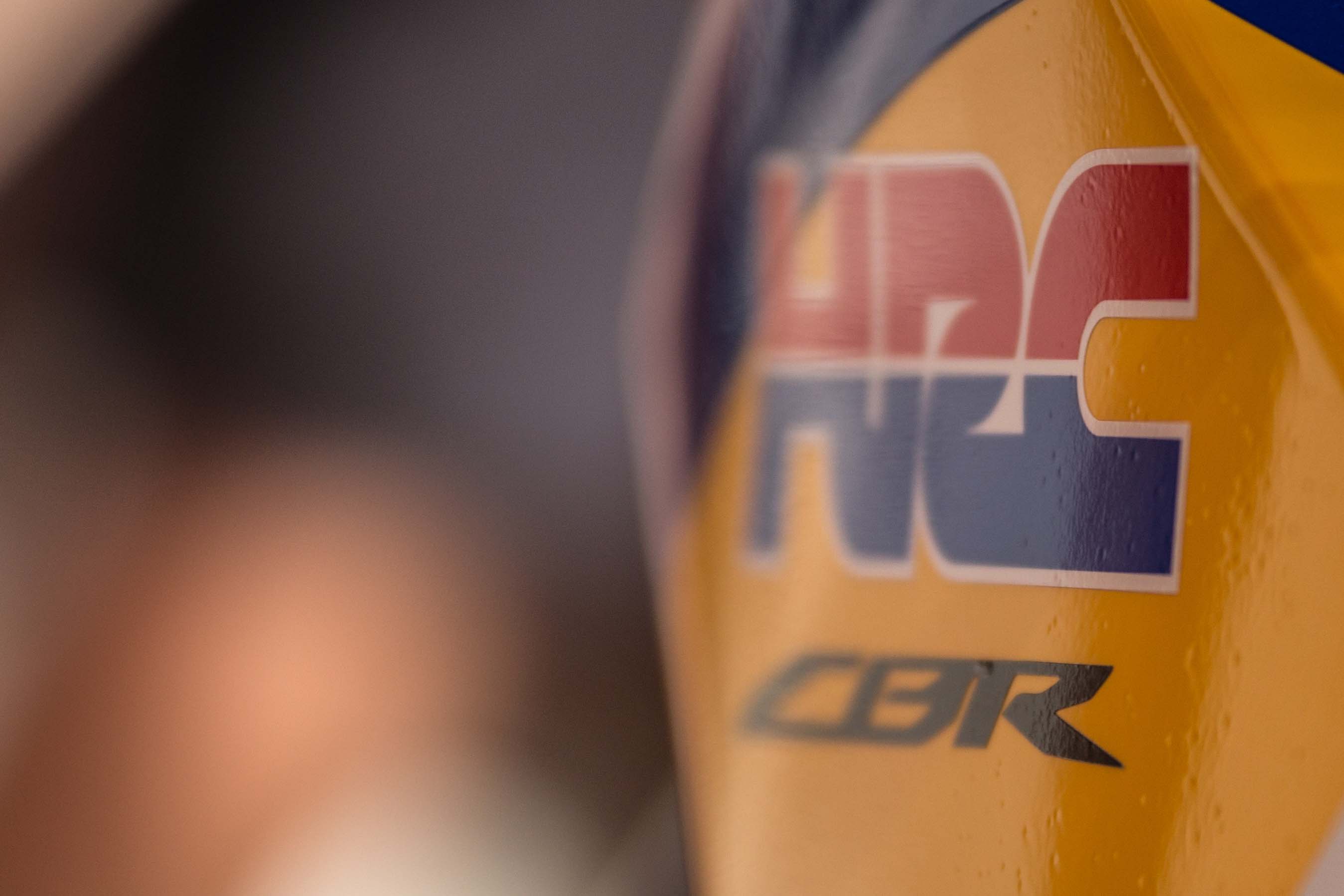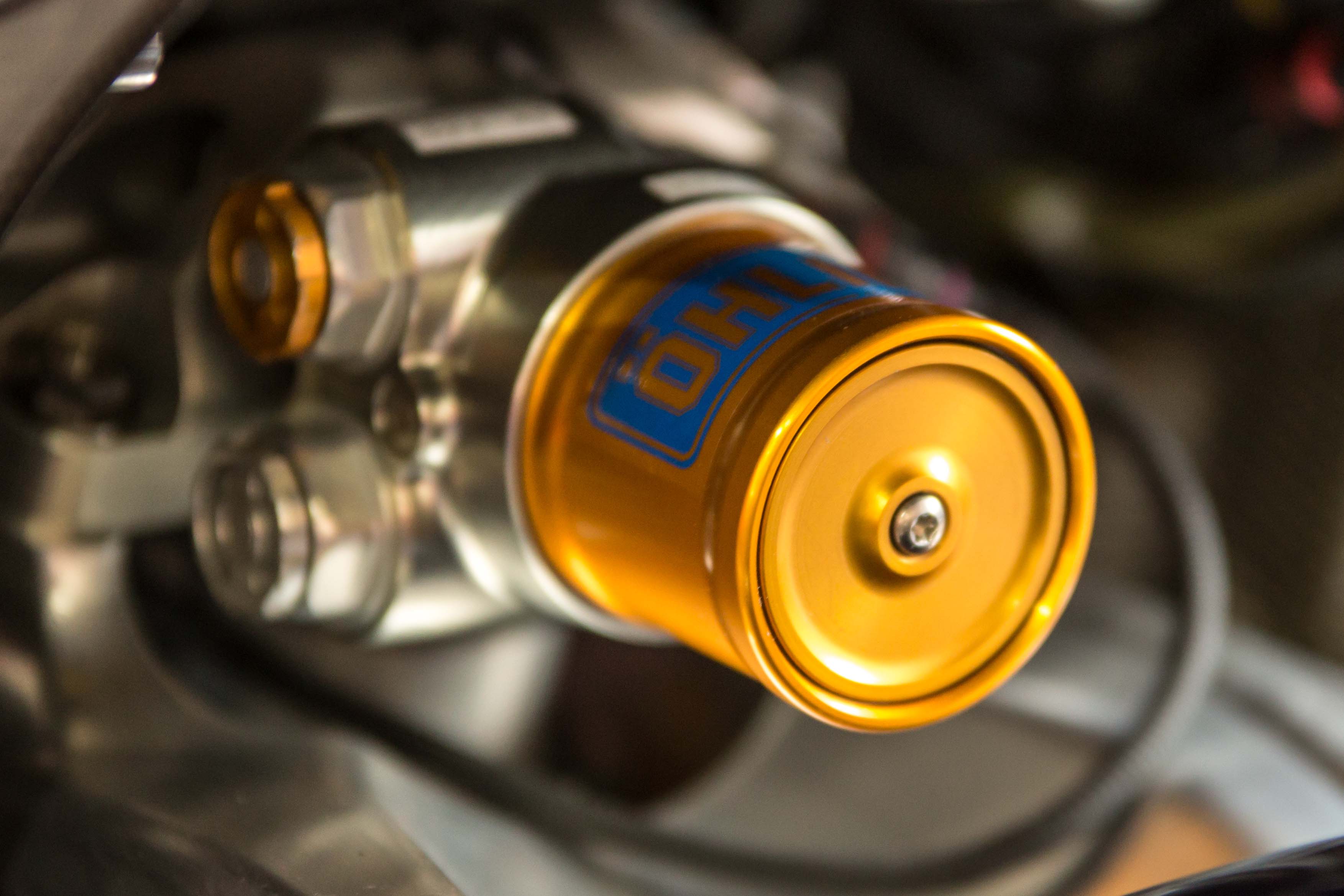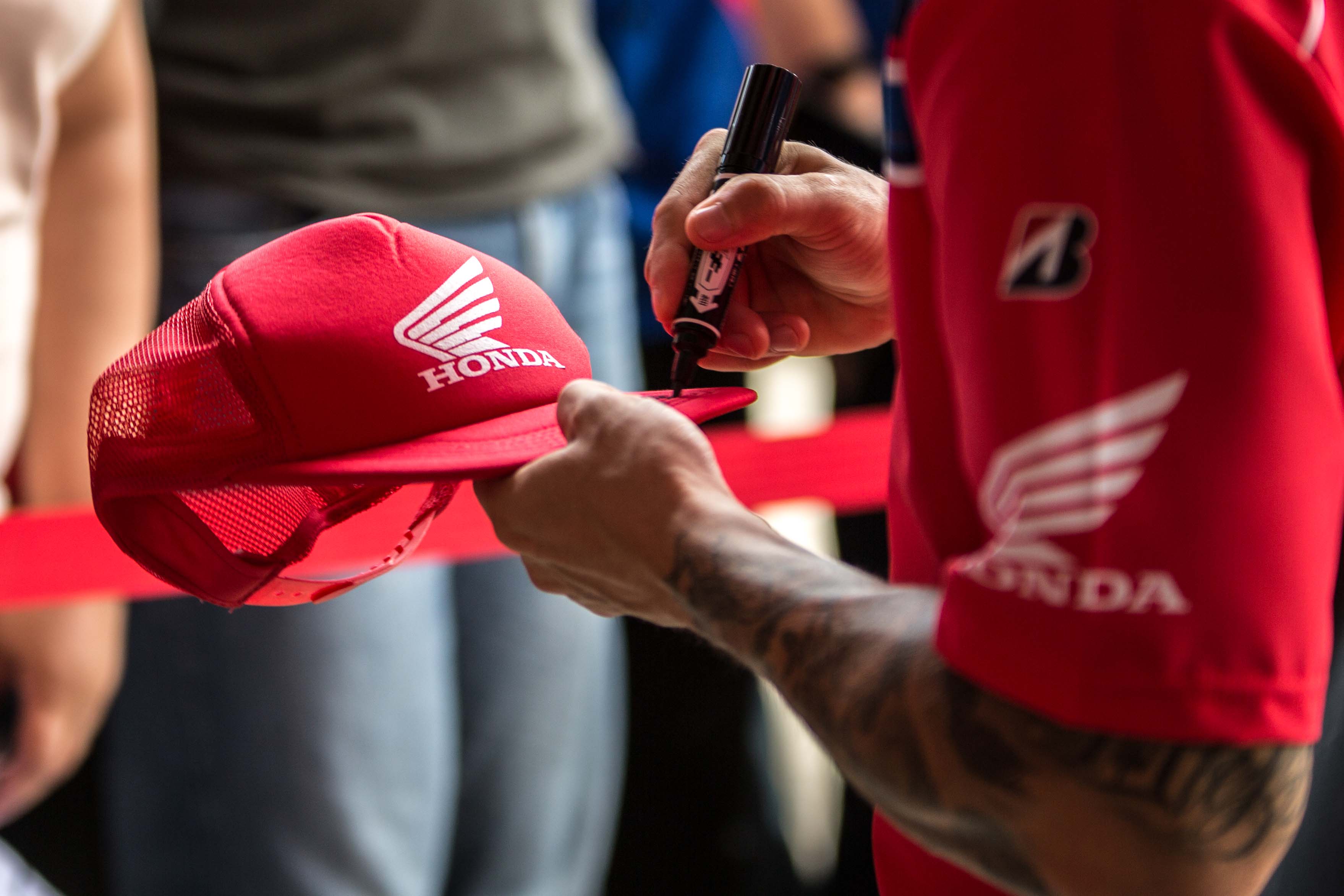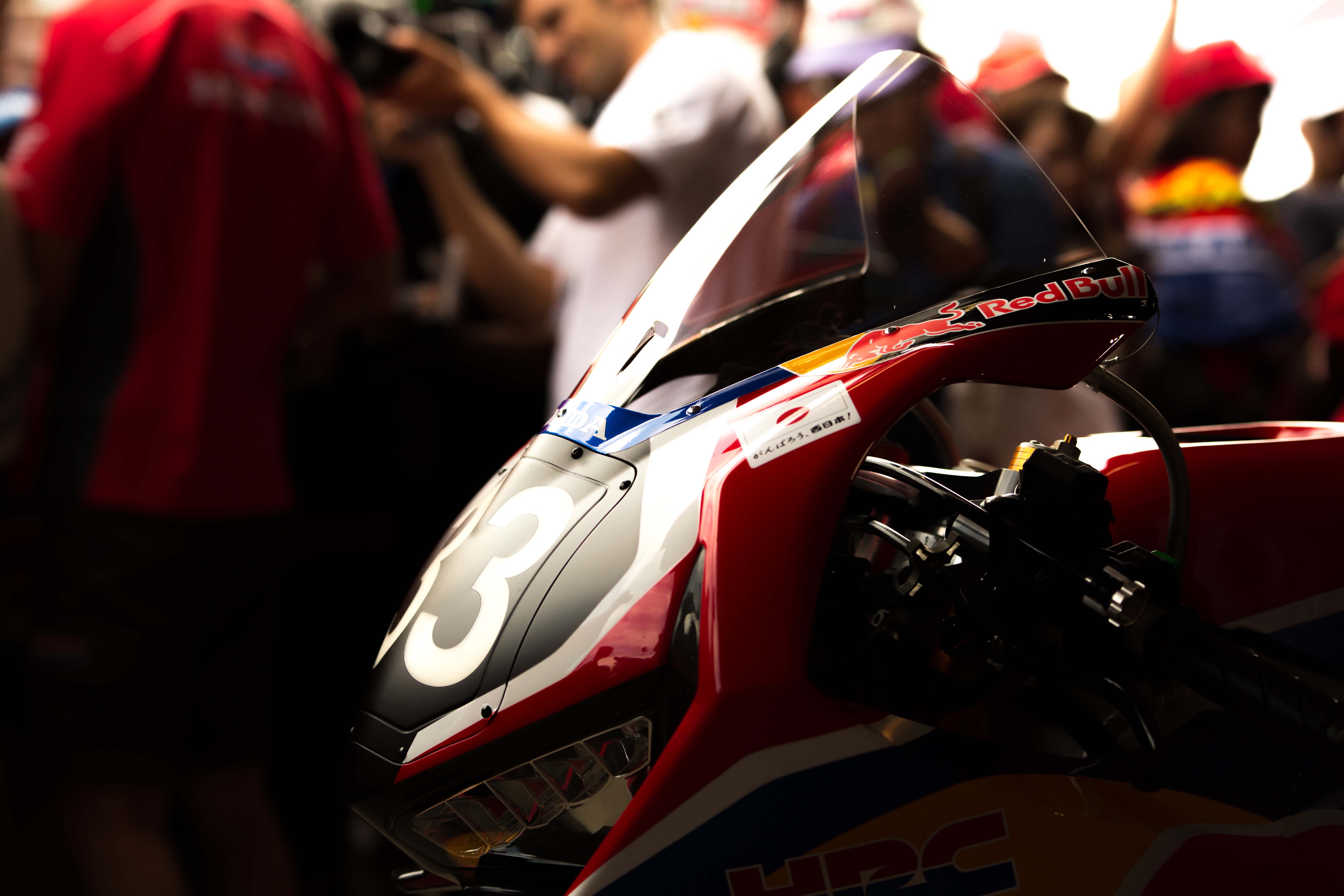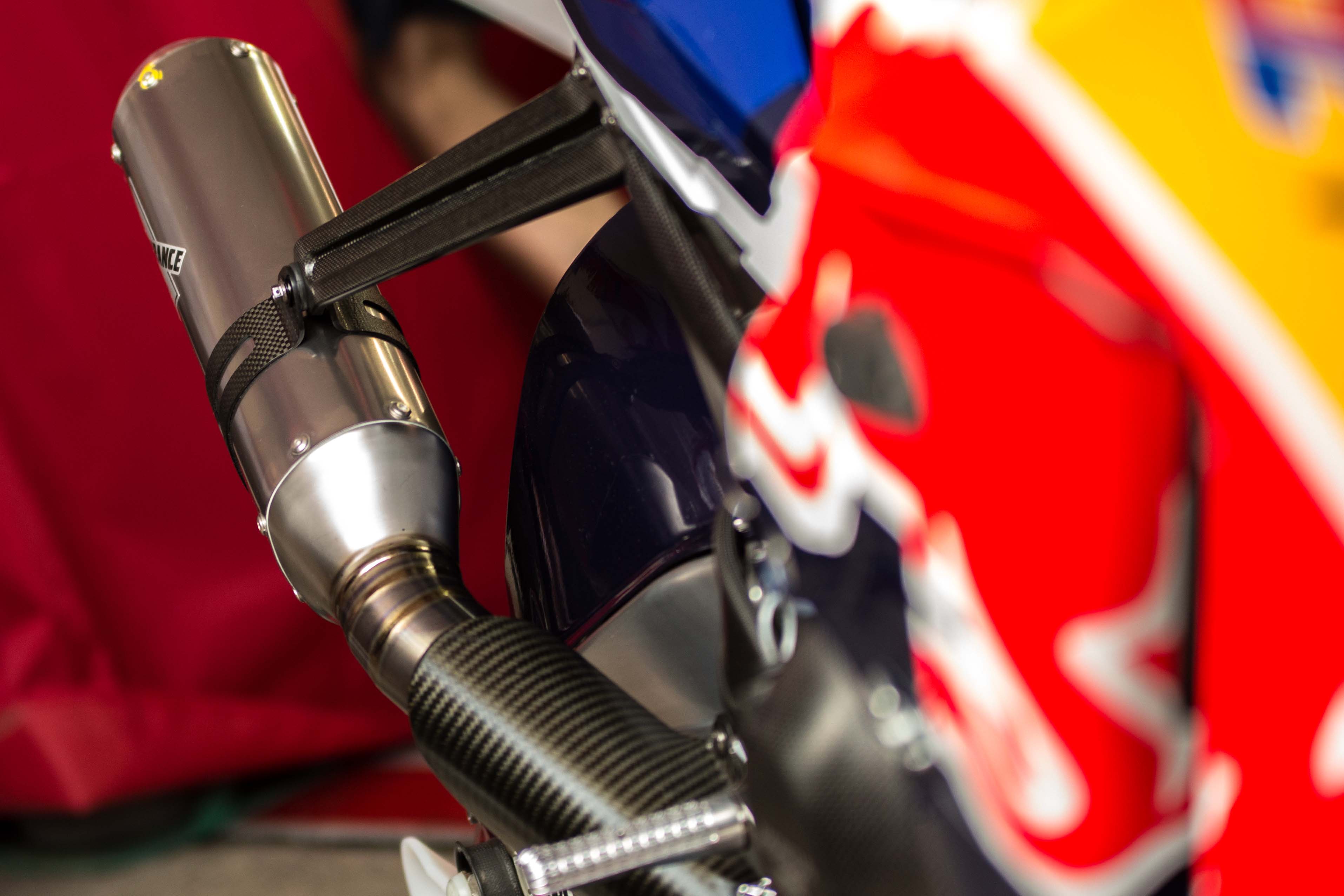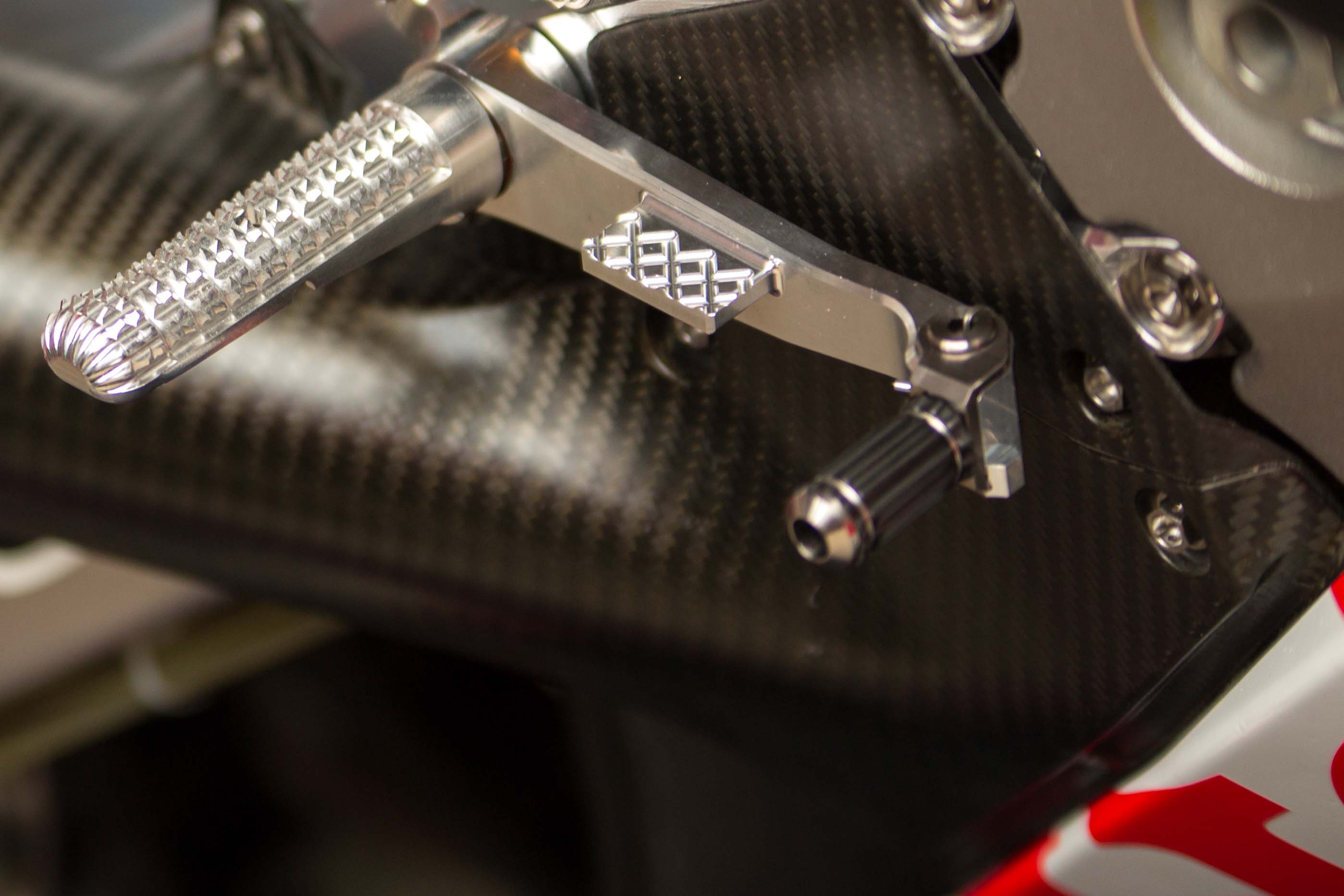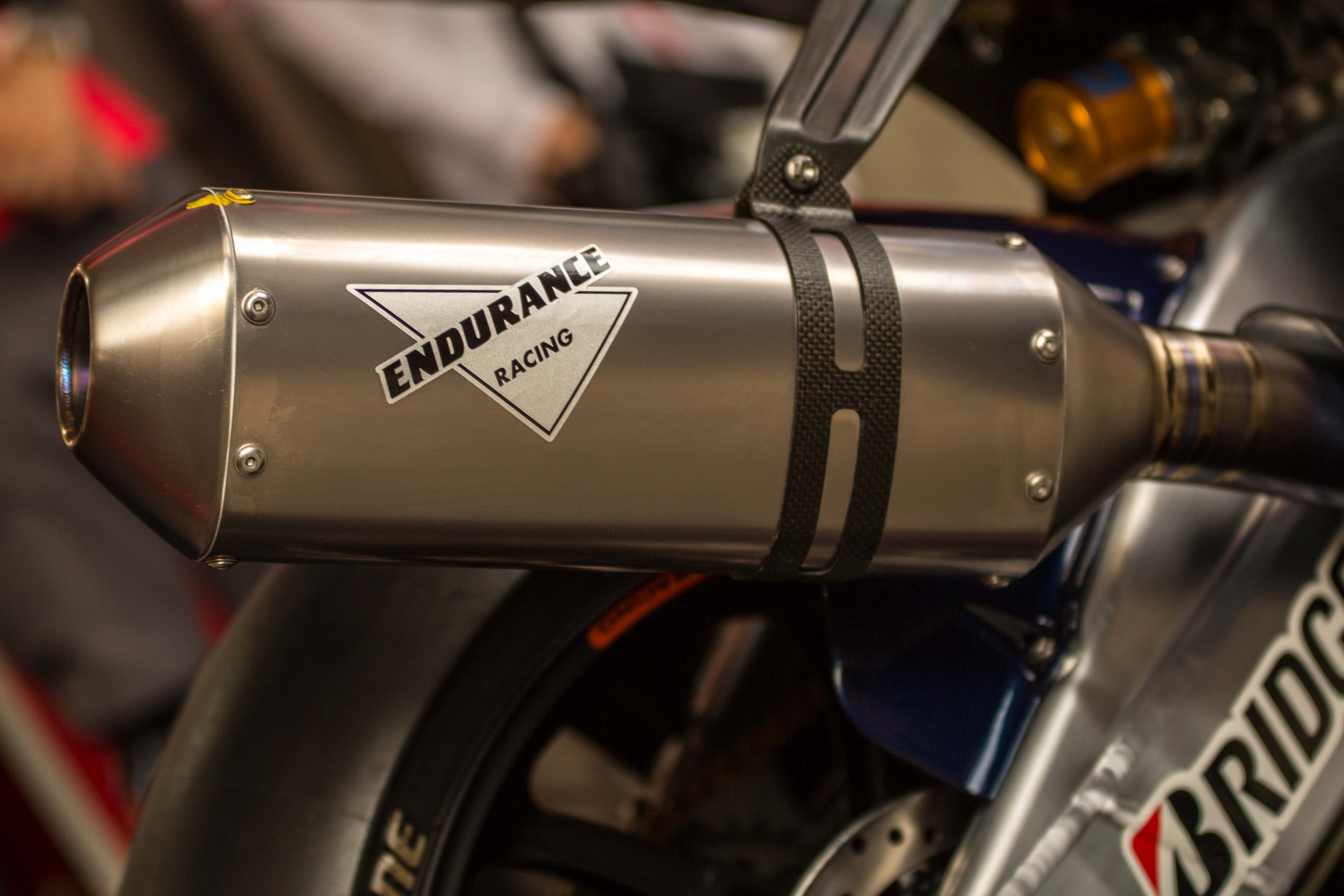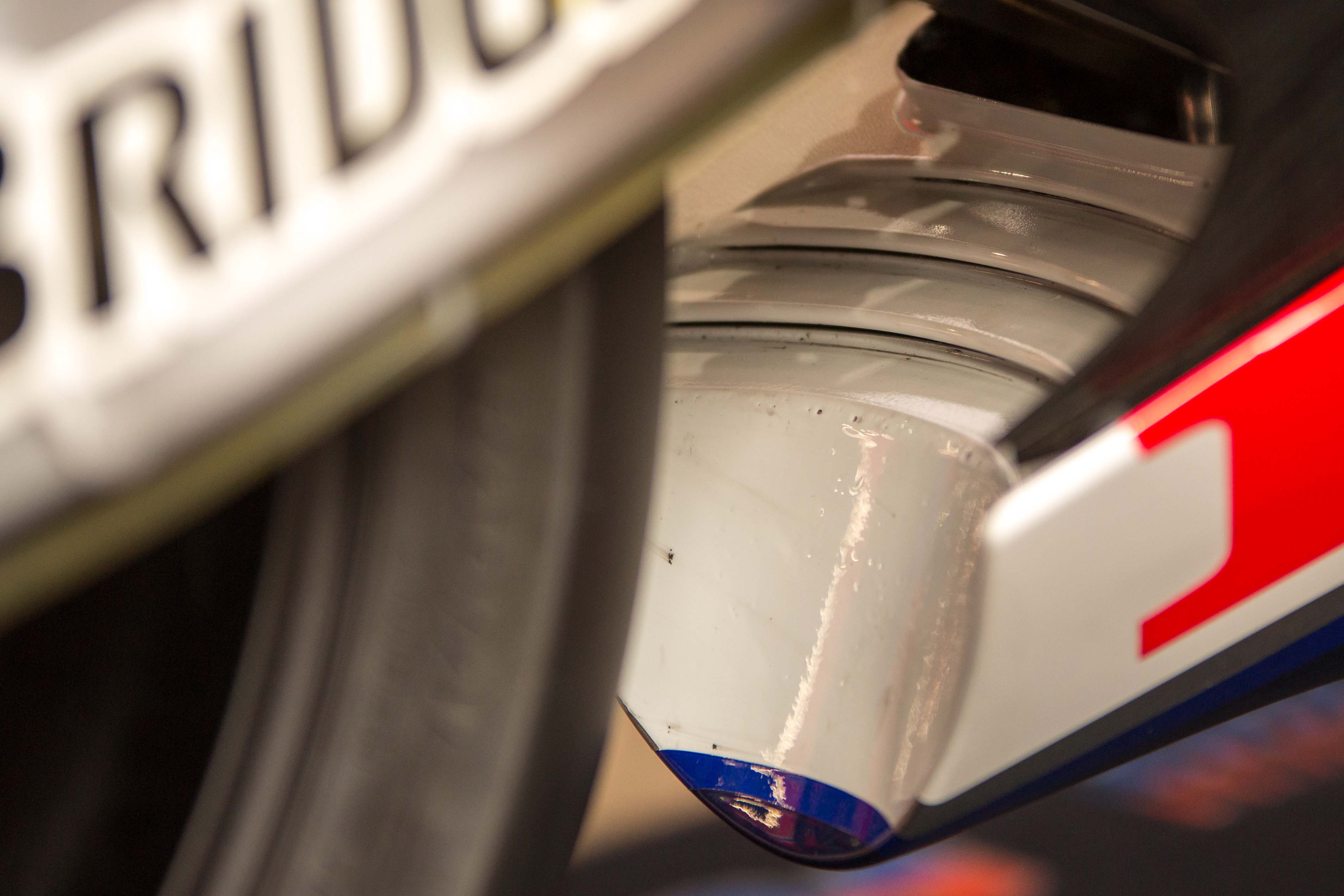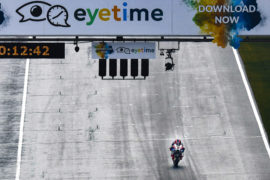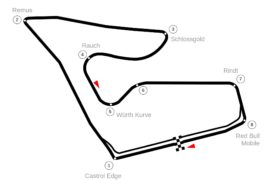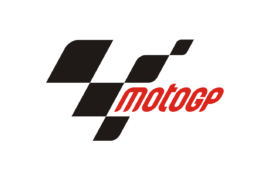Honda doesn’t want you to see these photos. I am pretty sure that there is a dark room somewhere on the Suzuka Circuit facility, possibly guarded by Yakuza henchmen, where they are keeping Steve captive for his misdeeds in bringing you the detailed photos we are about to show you.
This is how seriously HRC is taking this year’s Suzuka 8-Hours.
“Win at all costs” is the mantra being used by the Red Bull Honda team, which will field PJ Jacobsen, Takaaki Nakagami, and Takumi Takahashi at this year’s edition of the race. Their goal is simple: to restore honor to the company, and win the most prestigious race on the Japanese calendar.
To do this, Honda has built a special machine. A one-off superbike, this Honda CBR1000RR SP2 was designed to race at only one race track, for only one race, for only three riders. This Honda represents everything that HRC knows about making an endurance racing machine.
As you can imagine then, while this story starts with a bit of hyperbole, it isn’t far from reality.
Clad in Öhlins suspension, Nissin brakes, and Bridgestone tires, the Red Bull Honda team has leveraged some of the best in the business to win at Suzuka, and these three choices are critical.
Typically we see Honda partnering with Showa suspension, but lately HRC has been using Öhlins (and the mountain of data and development that the Swedish brand brings with it) for its racing applications.
At one point in time, there had been a goal of developing Showa into an Öhlins rival (HRC accounts for roughly half of Showa’s business), but the use of the “gold bits” here shows that Honda has taken a more pragmatic approach for Suzuka. Remember, win at all costs.
Honda is however staying with Nissin, another Japanese brand that has strong ties to Big Red. This isn’t surprising, since Honda owns over ⅓ of Nissin’s publicly traded stock. But, this move does fly in the face of the paddock standard of using Brembo brakes.
However, Nissin has benefitted greatly from Honda’s co-development of the brand, and as a result the Nissin braking package has improved immensely.
As such, the braking components on the Red Bull Honda CBR1000RR SP2 are straight from Nissin’s MotoGP program, adapted for quick-change pit stops of course. The feedback is little different with Nissin, especially on brake-release, but Honda’s riders have had little issue adapting to them.
Lastly, Bridgestone tires are the de facto ingredient for winning at Suzuka, as the Japanese tire brand has figured out how to make a tire last around this incredibly long and difficult circuit, during the blistering heat of summer.
At the handlebars, we see the usual flurry of switches, which control a Magneti Marelli electronics package. It was last year at the Suzuka 8-Hours that Honda decided to switch from Cosworth to Magneti Marelli for its electronics, with the Suzuka team’s gizmos outshining those in the WorldSBK paddock.
It has been the job of PJ Jacobsen to develop the Magneti Marelli hardware for Honda in World Superbike this year, and his pick as Leon Camier’s replacement for Suzuka was a no-brainer for the squad.
Honda has struggled in racing with the electronics on the CBR1000RR, with the ride-by-wire system said to be the reason that Casey Stoner crashed at Suzuka several years ago, and why Guy Martin crashed at the TT last year.
So far, the system has been solid for Red Bull Honda, but an eight-hour race around Suzuka is a test unlike any other.
Moving our way around the machine, we see copious amounts of carbon fiber being used – spare no expense, and win at all costs – but we also see tricks of the trade, to ensure as little time is spent in the pits as possible.
Crash buttons have been integrated into the fairing design, streamlined from the wind, but ready to protect the important bits during a topple.
Cropped partially out of view, we can also see the side-mount for Honda’s lifting stand, right in front of the generator cover. This easy system to lift the bike helps get the front wheel off the ground, while the rear-end is lifted with a more traditional swingarm stand.
If you watch pit stop practice videos from Suzuka, it is clear why such a lift is a huge benefit in the pits, where every second counts.
The rear swingarm has been modified from the production version, though keeps a very similar shape to it. Its rigidity has likely been increased, for added stiffness, and lightened for less unsprung weight.
Also visible is the full titanium exhaust, which was made in-house at HRC. Honda’s ability to make custom parts doesn’t end there, of course, and I think one of my favorite details is the rear brake lever, which has an added step on it.
This likely not only gives the riders a larger platform to push on when braking, but also has the added benefit of allowing the rear brake to be actuated after a crash snaps the toe lever off.
It is clever details like this that sets Honda above the rest, especially at Suzuka.
Even with all these technological tricks and mechanical masterstrokes, the Red Bull Honda team will have a mountain to climb at the Suzuka 8-Hours this year.
The pace of the Yamaha Factory Racing Team and Kawasaki Team Green has been astounding.
Many in the paddock are saying that Yamaha and Kawasaki are on another level, with Honda trailing behind. But, what happens in practice and qualifying holds little weight to what can occur during the race.
Endurance racing requires speed and consistency, and in eight hours, anything can happen.
Lead Photo: HRC; Other Photos: © 2018 Steve English – All Rights Reserved
Our Suzuka 8-Hours coverage is made possible by our A&R Pro members. If you like reading this unique race coverage on Asphalt & Rubber, you should consider supporting this content by signing up for A&R Pro.

